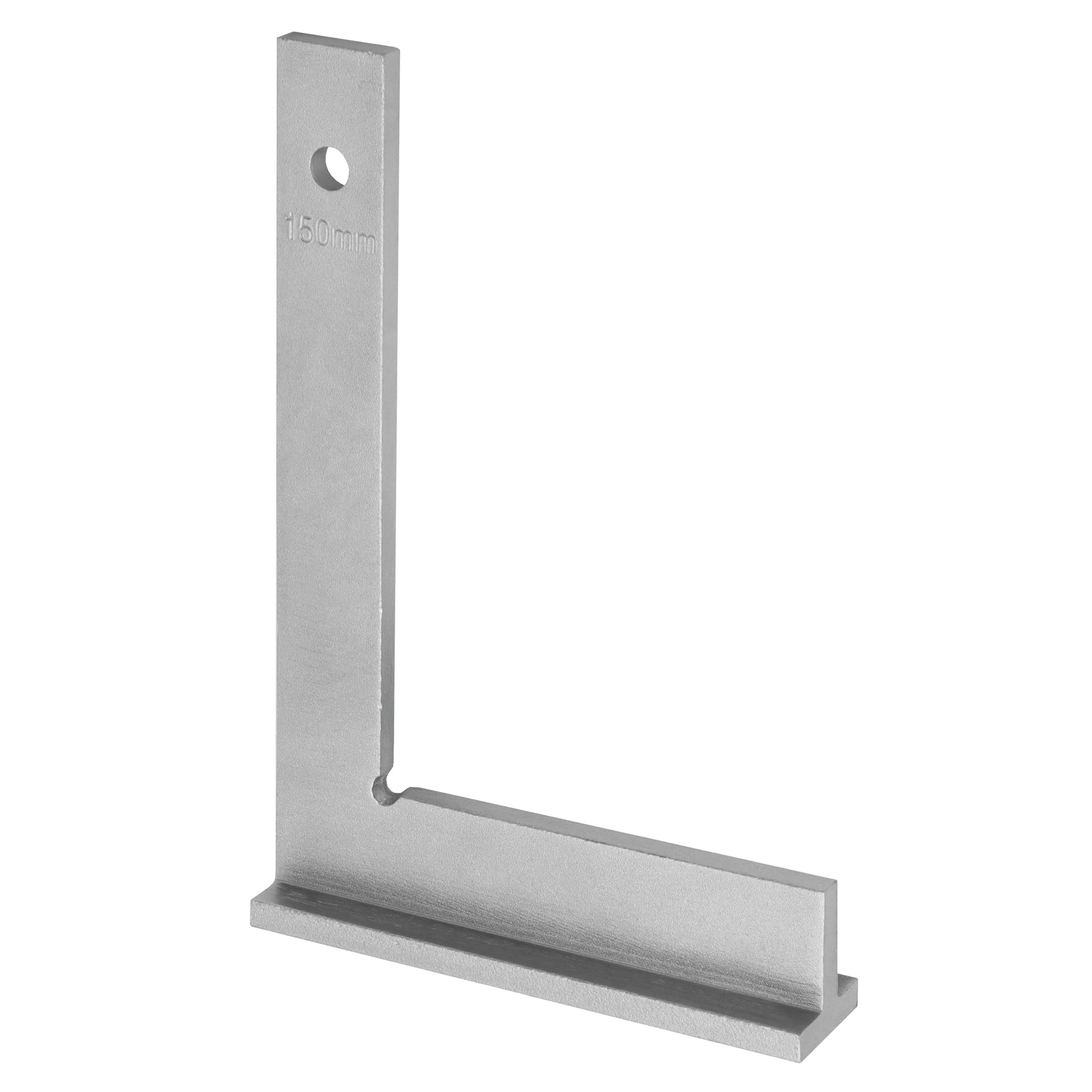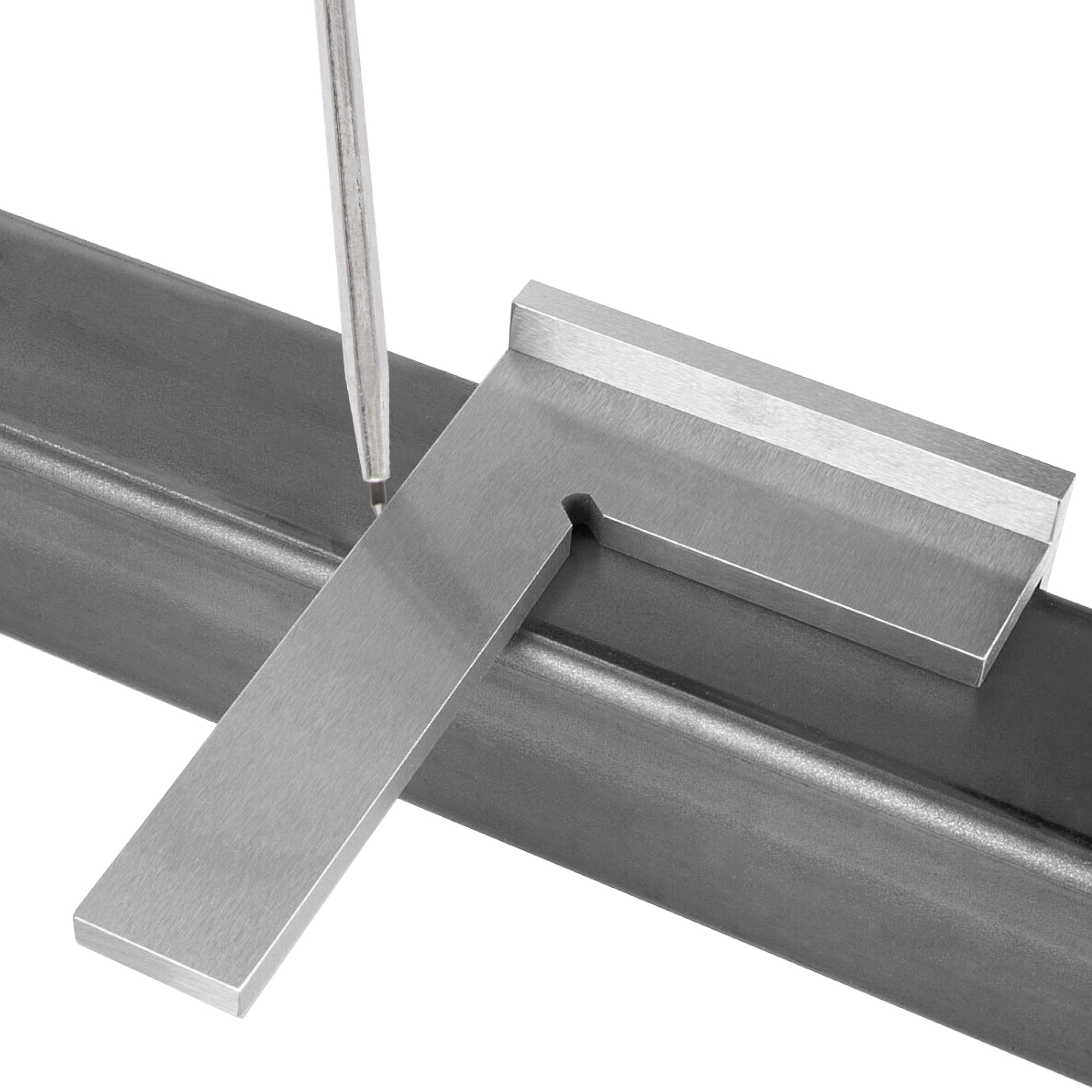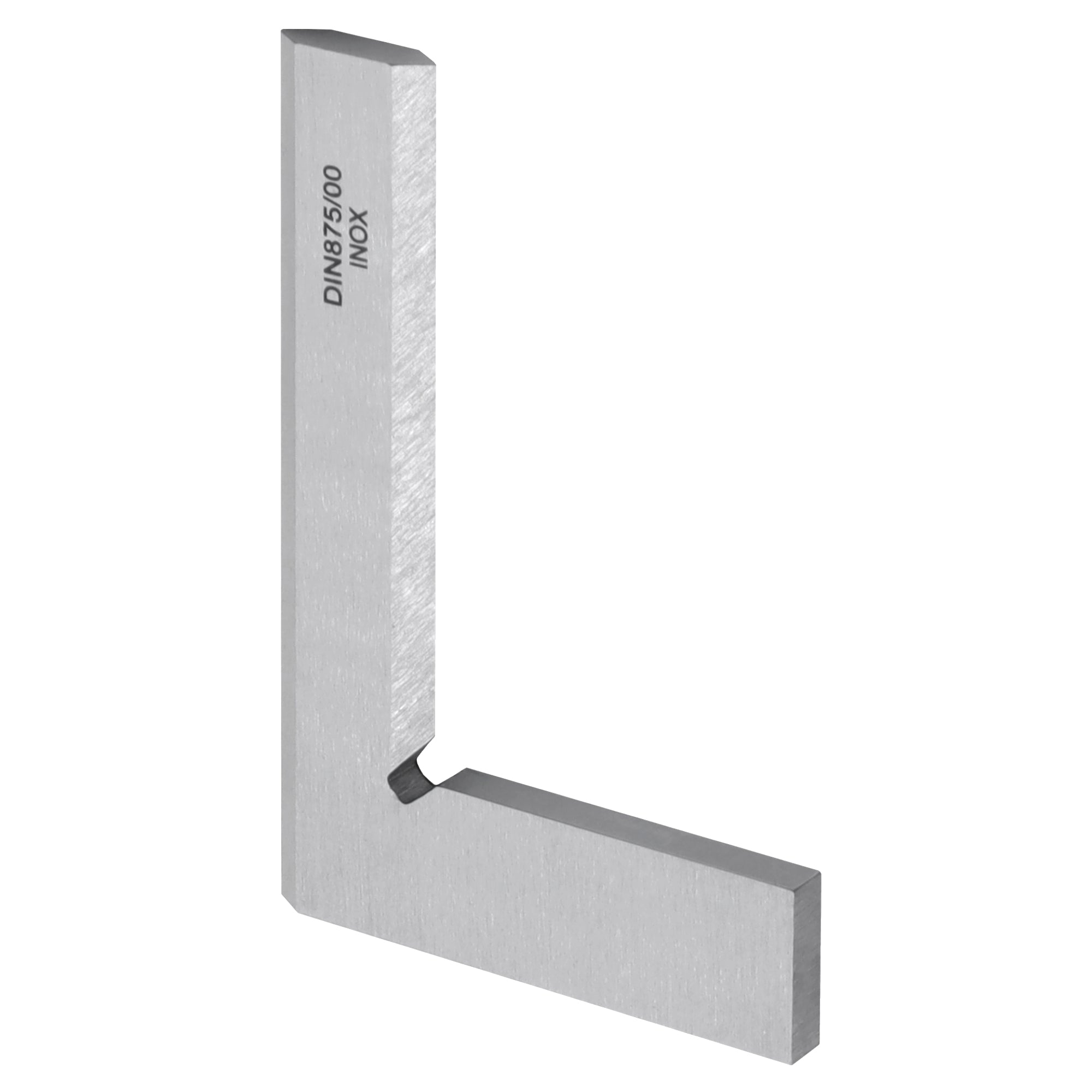Which square is right for my application?
Choosing the right square depends on the application, the required accuracy, and the specific requirements. Here you will find an overview of the different types of squares and their properties, as well as the accuracies according to DIN 875.
| angle | Application | standard |
|---|---|---|
| Workshop square | Rough, simple processing of metal and wood. | - |
| Workshop square Gen. 2 | General workshop work with medium precision requirements. | DIN 875-2 |
| Workshop square Gen. 1 | Precise 90° angle controls with high accuracy requirements. | DIN 875-1 |
| Precision square Gen. 1 (stainless) | Precise 90° angle controls with high accuracy requirements. Made of stainless steel for high durability. | DIN 875-1 |
| Precision square Gen. 0 (stainless) | Precise 90° angle controls with very high accuracy requirements. Made of stainless steel for high durability. | DIN 875-0 |
| Precision Hair Square Gen. 00 | High-precision flatness and straightness testing in the µm range (light gap method). | DIN 875-00 |
| Adjustable hair angle | ||
| Precision cutter angle | ||
| Acute angle 45° Gen. 2 | Precise testing of 45° angles in metal and wood processing. | DIN 875-2 |
| Hexagon angle 120° Gen. 2 | Precise testing of 120° angles in metal and wood processing. | DIN 875-2 |
| Octagonal angle 135° Gen. 2 | Precise testing of 135° angles in metal and wood processing. | DIN 875-2 |
| Setting angle (bevel) | For transferring and adjusting angles on workpieces in wood and metal processing. | - |
| Centering angle | Precise marking and measuring of center points on workpieces in metal construction. | - |
| Flange angle | Piping and flanging work, for the precise alignment and control of connections. | - |
Accuracies according to DIN 875
Formulas for the perpendicularity tolerance of the test surfaces:
| Degree of accuracy | Tolerance in µm (L in mm) |
|---|---|
| 00 | 2 + L / 100 |
| 0 | 5 + L / 50 |
| 1 | 10 + L / 20 |
| 2 | 20 + L / 20 |
Formulas for flatness/straightness tolerance:
| Degree of accuracy | Tolerance in µm (L in mm) |
|---|---|
| 00 | 2 + L / 250 |
| 0 | 2 + L / 100 |
| 1 | 4 + L / 50 |
| 2 | 8 + L / 25 |
Perpendicularity tolerances in µm:
| L in mm | 00 | 0 | 1 | 2 |
|---|---|---|---|---|
| 50 | 3 | - | - | - |
| 75 | 3 | 7 | 14 | 28 |
| 100 | 3 | 7 | 15 | 30 |
| 150 | 4 | 8 | 18 | 35 |
| 200 | 4 | 9 | 20 | 40 |
| 250 | 5 | 10 | 23 | 45 |
| 300 | 5 | 11 | 25 | 50 |
| 500 | 7 | 15 | 35 | 70 |
| 750 | 10 | 20 | 43 | 85 |
| 1000 | 12 | 25 | 60 | 120 |
Flatness/straightness tolerances in µm:
| L in mm | 00 | 0 | 1 | 2 |
|---|---|---|---|---|
| 40 | 2 | - | - | - |
| 50 | 2 | 3 | 5 | 10 |
| 70 | 2 | 3 | 5 | 11 |
| 75 | 2 | 3 | 6 | 11 |
| 100 | 2 | 3 | 6 | 12 |
| 130 | 3 | 3 | 7 | 13 |
| 150 | 3 | 4 | 7 | 14 |
| 165 | 3 | 4 | 7 | 15 |
| 175 | - | - | - | 15 |
| 200 | 3 | 4 | 8 | 16 |
| 250 | 3 | 5 | 9 | 18 |
| 300 | 3 | 5 | 10 | 20 |
| 330 | 3 | 5 | 11 | - |
| 375 | - | - | - | 12 |
| 500 | 4 | 7 | 14 | 28 |
| 660 | 5 | 9 | 17 | - |
| 750 | 5 | 10 | 19 | 38 |
| 1000 | 6 | 12 | 24 | 48 |







